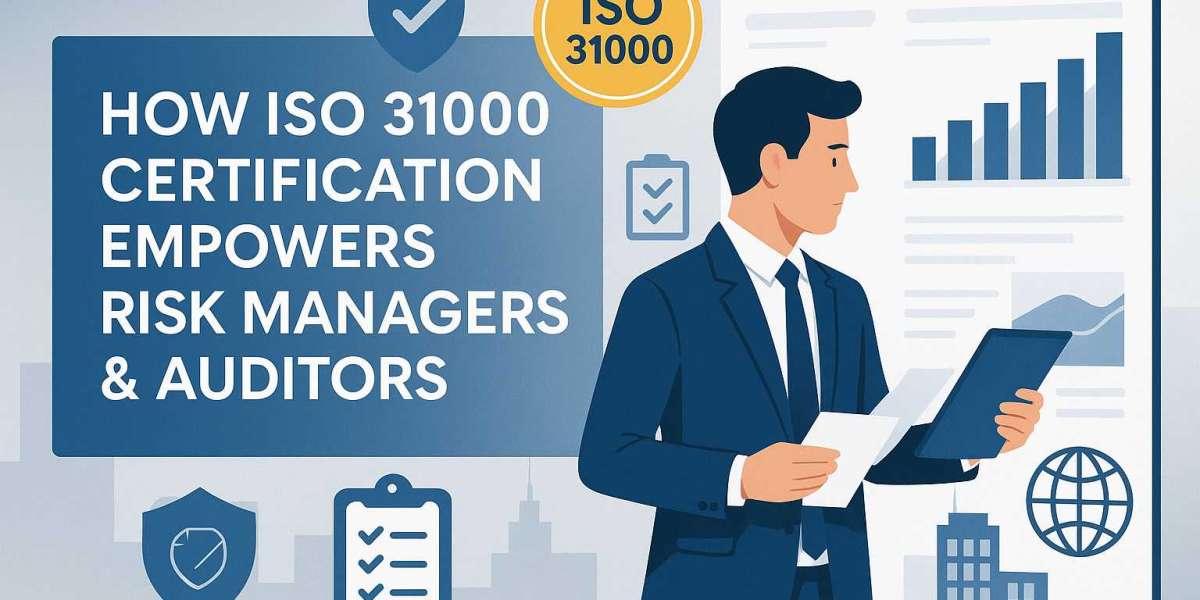In today’s fast-changing business environment, managing risks effectively is no longer optional—it’s essential. Organizations face increasing uncertainties from market fluctuations, cyber threats, compliance requirements, and operational challenges. This is where the ISO 31000 Certification becomes a valuable asset, particularly for risk managers and auditors who are responsible for protecting organizational value and ensuring long-term resilience.
Understanding ISO 31000 Certification
The ISO 31000 standard provides a structured framework for risk management, offering principles and guidelines that help organizations identify, assess, and mitigate risks systematically. Unlike prescriptive standards, ISO 31000 is flexible and can be applied to any organization—regardless of its size, industry, or complexity.
By earning the ISO 31000 Certification, professionals demonstrate their knowledge of global best practices in risk management and their ability to implement a consistent, effective risk management system aligned with organizational objectives.
Why Risk Managers Need ISO 31000 Certification
1. Enhanced Decision-Making Skills
Certified professionals learn how to integrate risk management into strategic decision-making. ISO 31000 emphasizes a proactive approach—helping risk managers anticipate potential threats and opportunities before they occur. This enables data-driven, informed decisions that strengthen organizational stability.
2. Consistency in Risk Processes
ISO 31000 provides a unified language and framework that ensures consistency across departments. For risk managers, this means better collaboration and alignment with other business units, auditors, and executives. A standardized approach minimizes confusion and improves the accuracy of risk reporting.
3. Increased Credibility and Career Growth
Holding an ISO 31000 Certification signals expertise and credibility in the field. Employers and clients recognize certified risk managers as professionals who follow international standards. This not only opens doors to new opportunities but also increases earning potential in risk management roles.
How Auditors Benefit from ISO 31000 Certification
1. Improved Audit Quality and Insight
Auditors with ISO 31000 knowledge can evaluate an organization’s risk management system more effectively. The certification equips them with tools to assess whether controls are adequate, risks are properly identified, and mitigation measures are aligned with ISO guidelines. This enhances the overall quality and depth of audits.
2. Bridging the Gap Between Risk and Compliance
Many auditors face challenges in connecting risk management with compliance activities. ISO 31000 bridges this gap by emphasizing how risk management supports governance and regulatory objectives. Certified auditors can provide more value by recommending improvements that strengthen both risk control and compliance efficiency.
3. Enhanced Objectivity and Confidence
When auditors understand ISO 31000 principles, they can provide independent assurance with greater confidence. Their recommendations become more actionable and credible, enabling organizations to build stronger internal control environments and reduce exposure to potential losses.
Organizational Advantages of Hiring Certified Professionals
Employing ISO 31000–certified risk managers and auditors offers significant advantages to organizations. They help in:
- Building a risk-aware culture across departments
- Strengthening compliance with international standards
- Reducing financial and operational losses
- Enhancing stakeholder confidence through transparent risk reporting
Ultimately, certified professionals act as strategic partners who contribute to business resilience and sustainable growth.
Conclusion
The ISO 31000 Training is more than a credential—it’s a professional transformation tool. For risk managers, it sharpens analytical and strategic skills; for auditors, it deepens their ability to evaluate and improve risk systems. Together, these professionals play a critical role in ensuring that organizations not only survive uncertainty but thrive in it.
In an era where risk is everywhere, ISO 31000 equips professionals with the knowledge, tools, and credibility to manage it with confidence.






